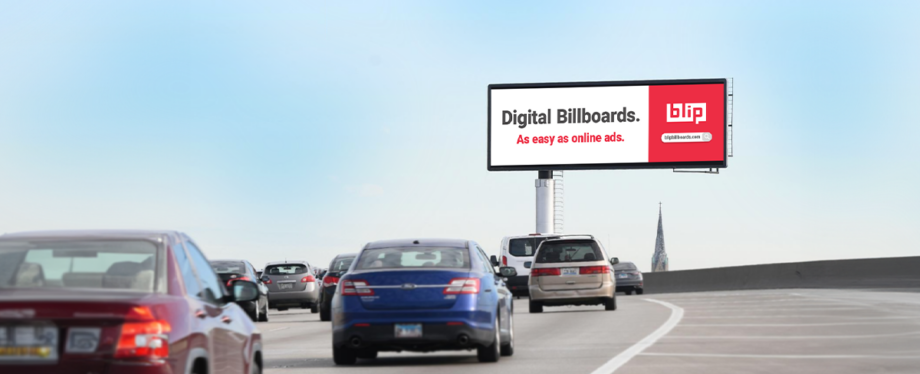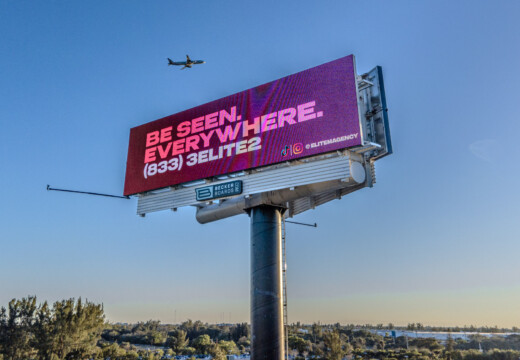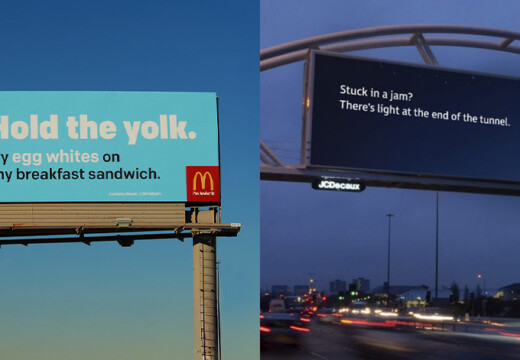There’s more to an advertising budget than just the budgeting itself. With so many advertising channels available to promote your company, it may seem nearly impossible to decide on the most effective ones, let alone be able to spend as little money as possible.
Companies spend slightly over 9% on marketing efforts on an annual basis, which also includes advertising campaigns. As this is a relatively significant expenditure, you shouldn’t mistakenly leverage popular advertising channels only, as this will lead to unsuccessful outcomes and a total waste of your advertising funds.
This is not a suggestion to completely forgo using popular advertising means, such as social media and banner ads. Instead, you should use various popular advertising channels – but at the right time in the customer journey.
Your potential customers are at different points in their customer journey with your brand. To make the most out of your ad spend, you need to appeal to them with the most appropriate tools depending on their stage in their journey.
Ultimately, to make the most of your advertising budget, you’ll need to use the right advertising formats and channels for the right people, at the right time. This post explores just that so you can garner the most views for less money.
Going beyond an advertising budget
First things first. You’ll need to stick with a fully developed budget before you fully launch your advertising programs. We taught you how to set an advertising budget with budgeting best practices.
But you’ll need to go beyond forming and maintaining an advertising budget to reach success in your advertising.
An effective advertising campaign involves reaching the right people with the proper advertising tools. The most successful advertising campaign is one in which your brand gets the most views for the least amount of money.
Reaping the most benefits while spending the least may seem like a Catch-22, but it’s possible if you’re disseminating your ads with your customer journey in mind. This means using the right tools and deploying them to those in the right stages of their customer journey. After all, no one will buy from you after seeing or hearing from you the first time.
That means certain advertising methods and channels just aren’t going to cut it. Your customers will need to see your messaging several times before taking any action (more on this in the below section).
As with any marketing campaign, advertising campaigns require nurturing your customers. If you don’t, your ad budget will suffer, no matter how many best practices you use.
Getting the Most from Your Advertising Budget by Applying the Right Tools at the Right Stage

With this in mind, how do you know where to begin? How do you reach the right people in your target audience? Which tools are best to target them with in your advertising? After you have set an advertising budget, you can tackle these concerns in the following twofold way:
- Take all of the available advertising tools at your disposal into account: When deciding on what tools to use, find which ones are available to you to lay them out and compare them. You can do so digitally, or whichever method makes most sense to you. It may be feasible to apply all of these tools and formats at different points, while it may also be ideal to just use a few. Aside from doing your due diligence on different advertising formats and outlets, remember to keep your budget in mind. You’ll need to ensure you can afford the tools you seek to deploy your ads with. We highly suggest doing this early on, but you may also make changes and add additional formats and tools to your list as you navigate the next step.
- Determine when and where to use your tools of choice along the customer journey: After you’ve combed over the various advertising methods available and considered the ones you seek to use, it’s time to get to the heart of mastering your ad budget and overall ad project: finding the right time and place for the right advertising tools.Remember that your target audience comprises people along various points in their respective customer journeys. Some may have seen your messaging once or twice, some may have seen your ads several times, while others have no idea who you are. Thus, you’ll need to use the most appropriate tools for different parts along that path, depending on where they are.This is where QI, or Qualified Impressions, our very own metric and standard of customers comes into play. Also called qualified buyers, these are the potential customers who have seen your advertisements at least 6 times. Customers need to see your messaging at least 6 times to take any action. According to the Rule of 7, customers need to see your messaging 7 times before they actually buy.
With this in mind, it’s time to map out where exactly in the customer journey are certain advertising methods and tools most appropriate and effective. Customer journeys have different stages, the exact number of which will vary from customer to customer, depending on how much it takes for them to both know and feel something for your brand.
However, you can configure tackling the overall customer journey into three main stages:
- Generating awareness of your brand
- Continuing through meaningful touchpoints with your brand
- Taking key actions when customers know and feel something about your brand
Generating awareness of your brand
This early stage involves bringing more awareness about your brand, thereby drawing in more customers to it. This means having your brand firmly implanted within your customers’ subconsciousness.
Customers in this stage in their buying journey have seen or heard from your brand 0-3 times.
A particularly strong way to generate awareness is via OOH, or out-of-home advertising methods. There are several OOH routes you can take to tackle the awareness stage, but one that is especially powerful: billboards. In fact, a whopping 71% of customers often pay attention to billboards.

Billboards cannot be missed, due to their positioning on busy highways and roads, as well as their mighty size, so it comes as no surprise that the vast majority of billboards demand attention.
DOOH, or digital out-of-home advertising in particular is the strongest OOH method, as digital billboards reel in much-needed attention to your brand like no other OOH method. Digital billboards are bright, flashy and dynamic. They rotate in blips (8-15-second slots of ad time) through a set period, which is proven to generate the most brand recall.
Thus, focus your ad budget on billboards for customers in the early stages of their awareness of your company. Luckily, with billboards, you can determine whether a certain group of people are qualified buyers. Remember, a QI (qualified impression) occurs when a customer has seen your messaging at least 6 times. (Read our blog post on QI via the post linked above in the previous section).
DO NOT USE A CTA in any of your messaging during the awareness stage. Remember, you would need qualified buyers, as they are at the stage of making any purchasing decisions.
Continuing with meaningful touchpoints with your brand
Moving along, we’re entering the middle tier stage, where customers have seen or heard from your brand between 4-5 times.
At this point in the customer journey, you can allocate your advertising budget to other advertising means apart from using billboards alone. That’s not to say you ought to cut off using billboards, as billboard usage is still incredibly valuable at this stage.
After all, what better way is there to familiarize people with your brand than to have it front and center on a brightly lit digital billboard? We suggest you continue using this method, but you should consider adding other forms of advertising into the mix.
Here are a few channels you can use to continue nurturing your customers as they wade through the middle tier of impressions with your brand:
Digital advertising channels:
- Google Adwords
- Bing and other search engine ads
- Facebook ads
- Twitter ads
- Pinterest ads
- Instagram ads
- LinkedIn ads
- Banner ads
Analog Advertising: methods
- Radio ads
- Television ads
- Print ads
- Posters
- Static billboards
- Word-of-mouth
Remember to spark interest and intrigue, as your customers need to not solely know you exist, but they need to develop feelings around your brand, which leads us to the final stage.
Taking key actions when customers know and feel something about your brand
Lastly, you should consider funding the final stage of the customer journey, which translates to being a qualified buyer. In this stage, your customers have seen you at least 6 times and beyond and are the most nurtured customers of any group.
In this stage, you can continue using a wide range of marketing and advertising means to command your potential (and current) customers’ attention. You can introduce new advertising means, as well as new messages, and even new themes in your messaging.
In this stage, you can also implement CTAs to all your marketing materials. This is because customers are now ready to make a purchasing decision. This is largely due to the fact that by nurturing your customers into qualified buyers, they are given opportunities to feel something about your brand. This includes feelings of credibility emanating from your brand, to self-identity, meaning, your customers see themselves relating to what your brand offers.
When customers know enough about your brand and have developed feelings towards it, they are more likely to buy from you – and not just once. When your ads resonate with your customers, they continue choosing your brand over your competitors.
Remember that billboard campaigns cost less than other advertising channels while reeling in the most attention.
Using the best advertising platforms
As aforementioned, OOH (out-of-home) advertising is one of the most powerful forms of advertising, even in the modern digital-first era. Billboards are especially useful tools, as they can be applied in all stages of the customer journey. They are particularly handy when calculating which populations include qualified buyers.
After all, qualified buyers are the most valuable, given that they are the most suited and nurtured of all and are ready to make purchasing decisions. But not all ad providers can assure you get qualified buyers. With Blip, you certainly can, as we partner with Geopath to gain this data on billboard passersby.
Blip Billboards offers everything you’d need from your DOOH campaigns. Our user-friendly platform makes it easy to set up a billboard campaign, from setting your advertising budget to scheduling your ads, bidding on blips and getting key insights into your billboard performance.
With us, you can rest assured you’re getting the most views for the least amount of money.


